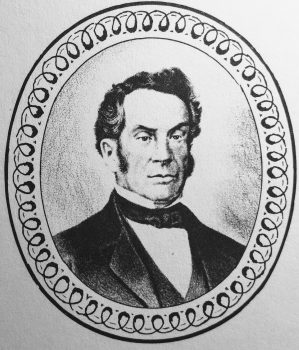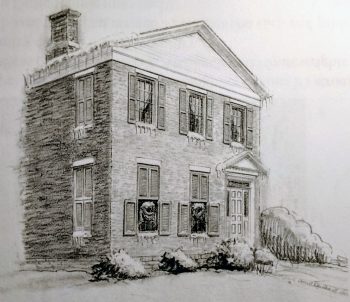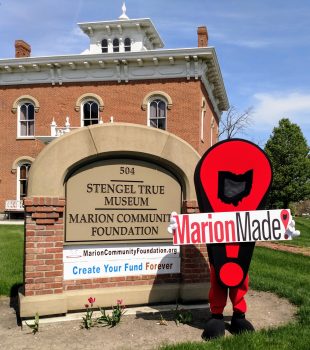 Young attorney Ozias Bowen came to Marion in 1828 and started his law office. Five years later, he married Lydia Baker, daughter of town founder Eber Baker, and their house at 270 E. Center St. was the first brick house in the village of Marion. Bowen admired the ancient Greek and Roman republics and he built his house with the end gable facing the street, making his house resemble the silhouette of a Greek temple with its strong triangular pediment framed in heavy molding.
Young attorney Ozias Bowen came to Marion in 1828 and started his law office. Five years later, he married Lydia Baker, daughter of town founder Eber Baker, and their house at 270 E. Center St. was the first brick house in the village of Marion. Bowen admired the ancient Greek and Roman republics and he built his house with the end gable facing the street, making his house resemble the silhouette of a Greek temple with its strong triangular pediment framed in heavy molding.
Bowen’s house was reputed to be a station on the Underground Railroad. Originally the kitchen was in the basement and had a finished hiding room with access through a small door two feet off the floor—with a cupboard hiding its presence and purpose.
As judge, Bowen presided over the famous Slave Trial of 1839, which nearly sparked the Civil War—two decades before its official beginnings.
 Today, the memorable old house is home to Laipply’s Printing and Marketing Solutions and owned by the Laipply family.
Today, the memorable old house is home to Laipply’s Printing and Marketing Solutions and owned by the Laipply family.
After Lydia’s death in 1847, Judge Bowen married Eliza McIntire. In 1864, he built a larger brick home at the corner of S. State and Washington streets, which now houses the Stengel-True Museum and Marion Community Foundation. This Victorian splendor of the Civil War era was passed down through the family to grandson Henry A. True, a noted banker in Marion. He donated the home for use as a museum.
The museum portions of the home includes the entrance foyer, music room, frontier room, upper hall, parlor, bedroom, and third floor hall leading to the cupola and a fine view of the city. The museum houses the collections of optometrist, jeweler, and hobbyist, Dr. Frederick A. Stengel. Stengel’s collections—everything from swords to teacups—record the early life of Marion, Ohio.
 The Stengel-True Museum shares space with the Marion Community Foundation and is open to visitors by appointment only.
The Stengel-True Museum shares space with the Marion Community Foundation and is open to visitors by appointment only.
#marionmade #wearehistory


















